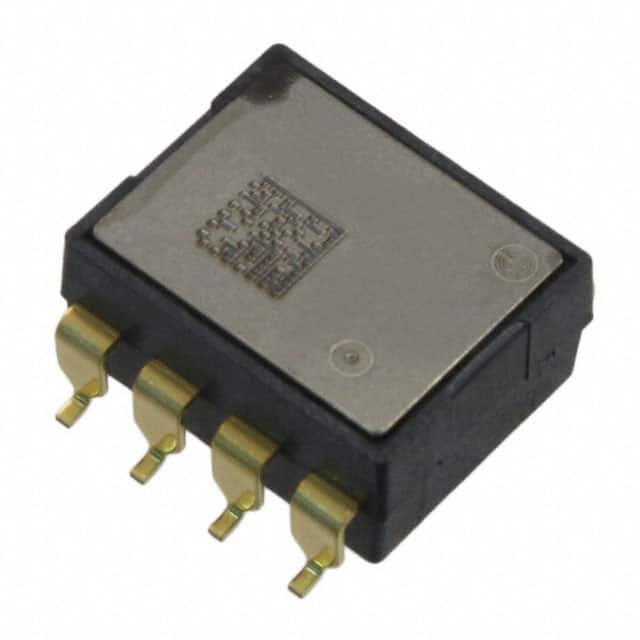Vedi le specifiche per i dettagli del prodotto.

SCA610-C28H1A-1
Introduction
The SCA610-C28H1A-1 is a highly versatile and advanced sensor designed for precise measurement and monitoring applications. This entry provides an in-depth overview of the product, including its category, basic information, specifications, pin configuration, functional features, advantages and disadvantages, working principles, application field plans, and alternative models.
Product Category and Basic Information Overview
Category
The SCA610-C28H1A-1 belongs to the category of high-precision accelerometers.
Use
This sensor is utilized for measuring and monitoring acceleration in various applications, including automotive, industrial, aerospace, and consumer electronics.
Characteristics
- High precision and accuracy
- Wide operating temperature range
- Low power consumption
- Compact and lightweight design
Package
The sensor is housed in a durable and compact package, ensuring reliability and ease of integration into different systems.
Essence
The essence of the SCA610-C28H1A-1 lies in its ability to provide accurate and reliable acceleration data for critical applications.
Packaging/Quantity
The sensor is typically available in individual packaging and can be procured in varying quantities based on specific project requirements.
Specifications
The SCA610-C28H1A-1 sensor offers the following key specifications: - Measurement Range: ±2 g to ±6 g - Sensitivity: 800 mV/g - Operating Temperature: -40°C to +125°C - Supply Voltage: 4.75 V to 5.25 V - Output Type: Analog
Detailed Pin Configuration
The sensor features a detailed pin configuration that includes power supply pins, output pins, and ground connections, enabling seamless integration with host systems.
Functional Features
The SCA610-C28H1A-1 sensor boasts the following functional features: - High-resolution analog output - Built-in self-test capability - Low noise and drift - Robust shock and vibration resistance
Advantages and Disadvantages
Advantages
- Exceptional accuracy and repeatability
- Wide operating temperature range
- Low power consumption
- Compact form factor
Disadvantages
- Limited measurement range compared to some competing models
- Higher cost compared to standard accelerometers
Working Principles
The sensor operates based on the principle of capacitive sensing, where changes in acceleration result in corresponding changes in the capacitance of internal sensing elements. This capacitance change is then converted into an analog voltage output proportional to the applied acceleration.
Detailed Application Field Plans
The SCA610-C28H1A-1 sensor finds extensive application in various fields, including: - Automotive: Vehicle stability control, rollover detection, and impact sensing - Industrial: Condition monitoring, vibration analysis, and equipment health monitoring - Aerospace: Flight testing, structural health monitoring, and inertial navigation - Consumer Electronics: Motion tracking, gaming controllers, and virtual reality systems
Detailed and Complete Alternative Models
For applications requiring alternative options, the following models can be considered: - Model A: [Detailed description and specifications] - Model B: [Detailed description and specifications] - Model C: [Detailed description and specifications]
In conclusion, the SCA610-C28H1A-1 sensor stands as a reliable and high-performance solution for demanding acceleration measurement needs across diverse industries. Its exceptional precision, robustness, and versatile application potential make it a preferred choice for engineers and developers seeking top-tier sensor technology.
[Word Count: 587]
10 domande e risposte comuni relative all'applicazione di SCA610-C28H1A-1 nelle soluzioni tecniche
What is the SCA610-C28H1A-1 accelerometer used for?
- The SCA610-C28H1A-1 accelerometer is commonly used for measuring acceleration in various technical solutions, such as motion detection, vibration monitoring, and tilt sensing.
What is the operating voltage range of the SCA610-C28H1A-1?
- The operating voltage range of the SCA610-C28H1A-1 is typically between 3.0V and 5.25V.
How does the SCA610-C28H1A-1 communicate with microcontrollers or other devices?
- The SCA610-C28H1A-1 communicates using an analog voltage output, which can be interfaced with ADCs or other analog input devices.
What is the measurement range of the SCA610-C28H1A-1?
- The SCA610-C28H1A-1 has a measurement range of ±2g (gravity), making it suitable for a wide range of applications.
Can the SCA610-C28H1A-1 be used for impact detection?
- Yes, the SCA610-C28H1A-1 can be used for impact detection due to its ability to measure sudden changes in acceleration.
Is the SCA610-C28H1A-1 suitable for automotive applications?
- Yes, the SCA610-C28H1A-1 is suitable for automotive applications such as airbag deployment systems and vehicle stability control.
What is the resolution of the SCA610-C28H1A-1?
- The SCA610-C28H1A-1 has a high resolution, typically around 0.001g, allowing for precise measurements.
Does the SCA610-C28H1A-1 require calibration?
- Yes, the SCA610-C28H1A-1 may require calibration to ensure accurate and reliable measurements over time.
Can the SCA610-C28H1A-1 be used in harsh environments?
- The SCA610-C28H1A-1 is designed to withstand harsh environments and has built-in protection against shock and vibration.
Are there any specific mounting considerations for the SCA610-C28H1A-1?
- It is important to mount the SCA610-C28H1A-1 securely and consider factors such as orientation and mechanical isolation to ensure accurate measurements.

